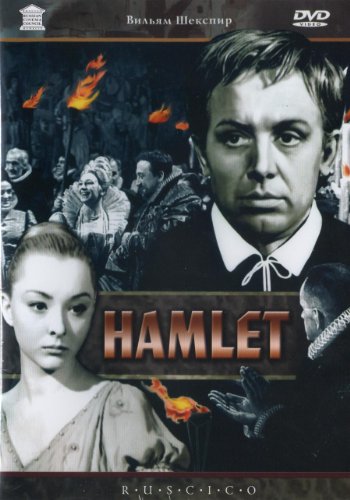Dmitri Shostakovich
Hamlet: Film Suite Op. 116a
Dmitri Shostakovich was born in Saint Petersburg, Russia in 1906 and died in Moscow in 1975. He composed the film score to director Grigori Kozintsev’s Hamlet in 1963-1964; it was first heard when the film was released in 1964. Shostakovich’s long-time associate Lev Atovmian drew the eight-movement Suite from the film’s original 34 numbers. The score of the Suite calls for 3 flutes, piccolo, 2 oboes, 2 clarinets, 2 bassoons, 4 horns, 3 trumpets, 3 trombones, tuba, timpani, percussion, harp, piano, harpsichord, and strings.
*****
Shostakovich long toyed with the idea of composing an opera based on Hamlet, but the time was never right. Still, he did write music for two other Hamlets. One was a set of youthful, quirky incidental music for the play while the other was his most masterful film score.
The incidental music met a sorry end. The avant-garde production was scandalous, with every character a drunkard and the central power struggle played for comedy, not tragedy. After only a few performances the production was banned with very little fuss: Stalin simply mentioned that he didn’t like the idea and the play was closed the next day. Shostakovich rescued the music—witty, tart, and reeking of the dance hall—in the Suite Op. 32a.
By 1963 Stalin was dead, the thaw was on, and Shostakovich had composed nearly 50 film scores. Most of these were hack-work hymns to the Workers’ Paradise assigned by the authorities. But he collaborated frequently with the outstanding Soviet film director Grigori Kozintsev, and when Kozintsev asked him to compose music for his cinematic Hamlet, Shostakovich was happy to join forces again.
Kozintsev’s Hamlet is a classic interpretation that focuses on the political power struggles of the play, quite unlike Olivier’s 1948 psychological exploration of Hamlet’s inner turmoil. Shostakovich’s music centers on three themes he created for three of the film’s characters: Hamlet, the Ghost, and Ophelia. In the film score these interact in a symphonic way just as their characters interact on the screen. In the Suite we hear Hamlet’s music in the Overture; the Ghost and Ophelia have their own movements. Director Kozintsev didn’t want to show the Ghost on-screen—he was afraid that the special effects would be unbelievable—so he asked Shostakovich to create a musical stand-in. Shostakovich gave the Ghost a theme with unearthly harmonies underpinned with the stroke of a gong—music that is always heard whenever the Ghost is present, even in Hamlet’s thoughts.
http://www.southbendsymphony.com/mw3-program-notes.php

